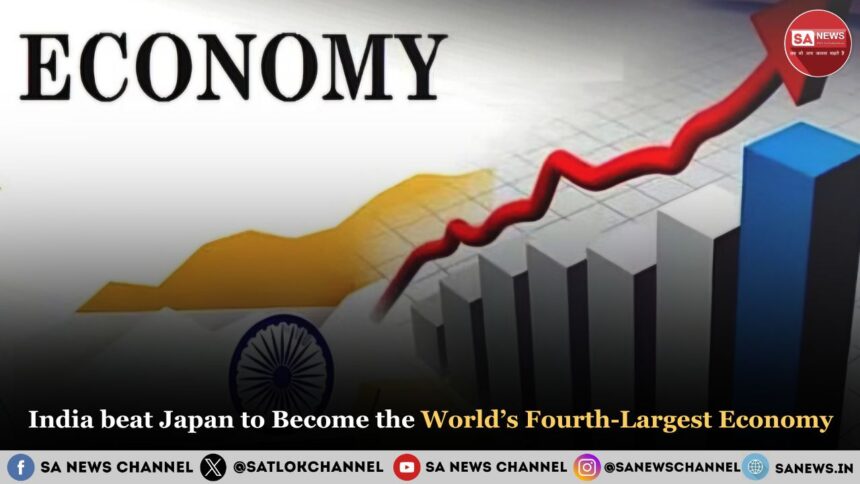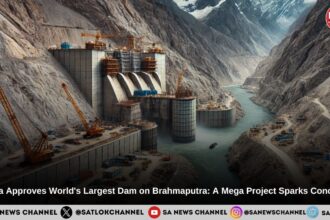India has officially become the world’s fourth-largest economy, overtaking Japan in global rankings. This development was recently confirmed by the International Monetary Fund (IMF), which reported that India’s GDP has crossed the $4 trillion mark.
- Key Drivers of India’s Economic Growth
- Make in India and Manufacturing Boom
- Rise of the Digital and Startup Economy
- Foreign Investments and Infrastructure Push
- What This Means for India and the World
- The Road Ahead: Is India Set to Become the Third-Largest Economy?
- Conclusion: India’s Bright Economic Future
This achievement is more than just a number. It reflects decades of steady progress, bold economic reforms, and the ambition of over 1.4 billion citizens. The growth of the Indian economy represents a powerful blend of innovation, resilience, and inclusive development.
Key Drivers of India’s Economic Growth
Several structural, technological, and policy-driven factors have contributed to India’s rapid rise in the global economic landscape.
Make in India and Manufacturing Boom
The Make in India initiative, launched in 2014, has been a game changer for India’s industrial sector.
- It encouraged both domestic and foreign companies to manufacture in India.
- The country has seen growth in key sectors like electronics, defense, textiles, and automotive.
- As a result, manufacturing has contributed significantly to exports and employment.
The development of industrial corridors and production-linked incentive (PLI) programs has boosted growth in this sector.
Rise of the Digital and Startup Economy
India’s digital economy has emerged as a global force:
- India has more than 800 million internet users, making it one of the biggest digital markets in the world.
- Platforms such as UPI have transformed payment systems and enhanced financial inclusion.
- The startup ecosystem has grown rapidly, producing over 100 unicorns across sectors like fintech, healthtech, and edtech.
A digitally empowered population is helping drive innovation, productivity, and entrepreneurship across the economy.
Foreign Investments and Infrastructure Push
India continues to be a top destination for foreign direct investment (FDI), thanks to its market size, improving ease of doing business, and supportive policy environment.
- Strategic sectors like renewable energy, telecom, and defense have seen a surge in FDI.
- Massive investments in infrastructure—highways, airports, metro systems, and smart cities—are improving connectivity and logistics.
- Government programs such as Gati Shakti and the National Infrastructure Pipeline are generating lasting growth prospects.
These developments have laid a strong foundation for India’s sustained economic expansion.
What This Means for India and the World
India’s rise has implications not only for its domestic economy but also for global politics, trade, and innovation.
Also Read: The India-European Union Free Trade Agreement: Strengthening Economic Ties for a Brighter Future
Growing Global Influence
As the fourth-largest economy, India is taking on a bigger role in influencing global decisions.
- It is an active participant in multilateral forums such as the G20, BRICS, and the United Nations.
- India is influencing global policy discussions on trade, technology, and sustainable development.
- Its expanding soft power, cultural diplomacy, and strategic alliances are enhancing its global footprint.
This economic growth strengthens India’s voice in international affairs.
India’s Role in Innovation and Green Energy
India is making significant strides in building a sustainable and future-ready economy:
- It is among the world’s leading countries in solar power capacity and renewable energy investments.
- Indian startups and enterprises are developing solutions in clean tech, electric vehicles, and AI.
- Government initiatives are promoting green hydrogen, circular economy practices, and smart energy grids.
By investing in innovation and green energy, India is not only boosting its economy but also contributing to global sustainability goals.
The Road Ahead: Is India Set to Become the Third-Largest Economy?
Yes. Leading economists and global institutions, including the IMF, project that India could overtake Germany to become the third-largest economy within the next 2.5 to 3 years.
Factors supporting this projection include:
- Sustained GDP growth between 6% and 8%
- A large, young, and skilled workforce
- Rising domestic consumption and urbanization
- Strong performance in services, manufacturing, and exports
As India continues to reform and invest in critical sectors, its economic trajectory remains strong and promising.
Conclusion: India’s Bright Economic Future
India has become the fourth-largest economy with a $4 trillion GDP, marking a significant milestone in its economic development. It reflects the successful blend of visionary policies, entrepreneurial energy, and digital transformation.
With ongoing initiatives like Make in India, a thriving digital economy, and growing leadership in sustainability and innovation, India is well on its way to becoming a global economic powerhouse.
The momentum is real, the foundation is strong, and the future of the Indian economy looks brighter than ever.









